We here at Notinhalloffame.com thought it would be fun to take a look at the major awards in North American team sports and see how it translates into Hall of Fame potential.
Needless to say, different awards in different sports yield hall of fame potential. In basketball, the team sport with the least amount of players on a roster, the dividend for greatness much higher. In baseball, it is not as much as a great individual season does not have the same impact.
After completing the Gold Gloves (thank God!) we wanted to do something away from Baseball and we picked a relatively new award, The NBA Most Improved Player of the Year.
On the surface, it would seem like anyone who improved enough to get this award likely had less than auspicious beginnings, which may mean that not very many of these players are Hall of Famers, but this is why we do this process!
Let’s find out!
The following are the past players who have won the Most Improved Player in the NBA who are eligible for the Naismith Basketball Hall of Fame and have been enshrined.
Tracy McGrady, Orlando Magic (2001)
26.8 PPG, 7.5 RPG, 4.6 APG, 1.5 SPG, 1.5 BPG. It took the award seventeen years of existence before we found our first Hall of Fame inductee (unless previous inductee Kevin Johnson gets in) but regardless if what happens with KJ, this is the first real NBA superstar we are talking about here. McGrady was with the Toronto Raptors the season before where he started nearly half of his games but this year he was Orlando’s starting Shooting Guard and his Minutes per Game increased from 31.2 to 40.1 with a PPG rise from 15.4 to 26.8 and a PER increase from 20.0 to 24.9. He would be named a Second Team All NBA member and would later win two scoring titles in his career. Inducted into the Hall of Fame in 2017.
The following are the players who have won the NBA Most Improved Player of the Year Award who are eligible for the Naismith Basketball Hall of Fame and have not been selected:
Alvin Robertson, San Antonio Spurs (1986)
17.0 PPG, 6.3 RPG, 5.5 APG, 3.7 SPG, 0.5 BPG. This was the sophomore season for Alvin Robertson whose minutes shot up from 21.3 to 35.1 per Game. Increased time certainly led to the increased production as he increased his PPG from 9.2 to 17.0 and more notably would win the Steals Title with a career high of 3.7 per Game. For his efforts this year, the San Antonio Spur would be chosen for his first All Star Game, would also win the Defensive Player of the Year and was a Second Team All NBA Selection. This would be his best season as he had a career high 19.5 PER, 6.2 VORP and 8.6 Win Shares. Robertson would go to three more All Star Games and make more All-Defensive Selections, but he never had a better regular season than this in the NBA. Ranked #47 on Notinhalloffame.com.
Dale Ellis, Seattle Supersonics (1987)
24.9 PPG, 5.5 RPG, 2.9 APG, 1.3 SPG, 0.4 BPG. Dale Ellis played for the Dallas Mavericks for the first three seasons of his career where he came off of the bench but in his first season with the Supersonics he was a starter and he more than tripled his Points per Game from 7.1 to 24.9 and in the next three seasons he would equal his 20 PP and 19.0 plus PER. However, he was only an All Star once. Ranked #97 on Notinhalloffame.com.
Kevin Duckworth, Portland Trail Blazers (1988)
15.8 PPG, 7.4 RPG, 0.8 APG, 0.4 SPG, 0.4 BPG. Kevin Duckworth would be later go to two All Star Games and in this season, which was his third in the NBA he was a starter for the first time doubling his minutes from 14.8 and 28.6. Playing for Portland, the Center would increase his PPG from 6.0 to 15.8 and doubled his Rebounds per Game from 4.8 to 7.4 but his Blocks per Game remained at 4.0. His PER was also only 14.9 but this was actually his career high and he had a VORP of -0.5. Duckworth actually NEVER had a VORP that had a positive integer. I guess we are saying that he really didn’t improve by much! Unranked on Notinhalloffame.com.
Kevin Johnson, Phoenix Suns (1989)
20.4 PPG, 4.2 RPG, 12.2 APG, 1.7 SPG, 0.3 BPG. Kevin Johnson was in his sophomore season and as a rookie he was traded from the Cleveland Cavaliers to the Phoenix Suns where he would become the starting Point Guard. K.J. now played nearly 40 Minutes per Game (up from 24.0) and this would be his first of four straight 10 Assist seasons, and the 12.2 he had this year would be his highest. Johnson would be named a Second Team All NBA Selection this year, and he would earn that honor again three more times. While the Naismith Basketball Hall of Fame does not yet inducted him, he is a strong contender to enter in the future. Ranked #9 on Notinhalloffame.com.
Rony Seikaly, Miami Heat (1990)
16.6 PPG, 10.4 RPG, 1.1 APG, 1.1 SPG, 1.7 BPG. Rony Seikaly was in his second season and he had a modest increase in Minutes per Game from 25.2 to 32.6 and he increased his PPG from 10.9 to 16.6 and his boards per Game went from 7.0 to 10.4. In the next four seasons he would average a double-double per season. This would be the only individual accolade (other than two Player of the Weeks) that Seikaly would win. Unranked on Notinhalloffame.com.
Scott Skiles, Orlando Magic (1991)
17.2 PPG, 3.4 RPG, 8.4 APG, 1.1 SPG, 0.1 BPG. This would be the only individual accolade for Scott Skiles who had his best season in almost every metric. This was a significant jump from the previous season in regards to his stats but in what was his fifth season in the NBA was also his halfway point of his professional career. Unranked on Notinhalloffame.com.
Pervis Ellison, Washington Bullets (1992)
20.0 PPG, 11.2 RPG, 2.9 APG, 0.9 SPG, 2.7 BPG. There is no argument that in what was the third NBA season of Pervis Ellison’s career that it was not just a warranted Most Improved Player of the Year Award year but it was by far and away the best campaign of his career. This was the only double-double season of the Center’s career but also the only 20 PPG season for Ellison who nearly doubled his Points from the year before. Unranked on Notinhalloffame.com.
Mahmoud Abdul-Rauf, Denver Nuggets (1993)
19.2 PPG, 2.8 RPG, 4.2 APG, 1.0 SPG, 0.1 BPG. Mahmoud Abdul-Rauf had his first of three 18.0 Points per Game Seasons, this one being a 19.2 PPG, which was a career high. This was his third season in the NBA and he had a significant increase in all stats, but as this was his highlight and it was not an All Star worthy one, we don’t have much of a Hall of Fame threat here. Unranked on Notinhalloffame.com.
Don MacLean, Washington Bullets (1994)
18.2 PPG, 6.2 RPG, 2.1 APG, 0.6 SPG, 0.3 BPG. Hmmm. This was the best season by far of Don MacLean’s career but if this was the best are we even close to a Hall of Fame career? We are not! After this season (he won his award in his second year) he never had a statistical campaign like this again and he would never come close to any award. Unranked on Notinhalloffame.com.
Dana Barros, Philadelphia 76ers (1995)
20.6 PPG, 3.3 RPG, 7.5 APG, 1.8 SPG, 0.0 BPG. This was the sixth season of Dana Barros’ career and by leaps and bounds the best. The above stats destroyed anything else he did before or after and this was also his only All Star campaign. Barros would never come close to another individual award again. Unranked on Notinhalloffame.com.
Gheorghe Muresan, Washington Bullets (1996)
14.5 PPG, 9.6 RPG, 0.7 APG, 0.7 SPG, 2.3 BPG. The star of Billy Crystal’s “My Giant” would win what would be his only individual award here and this was also his best season in the NBA. All of the above stat line would be career highs and he would finish first in Field Goal Percentage and was eighth in Blocks per Game. He would only be in the NBA for four years after this, one of which he had to sit out due to injury. Unranked on Notinhalloffame.com.
Isaac Austin, Miami Heat (1997)
9.7 PPG, 5.8 RPG, 1.2 APG, 0.5 SPG, 0.5 BPG. This was the sixth professional season of Isaac Austin’s career however it needs to be noted that the previous two seasons Austin played overseas and was in the Turkish League the year before. Was anyone really aware of how he improved from the season before? For what it is worth, he improved the next two years as an NBA player. Unranked on Notinhalloffame.com.
Alan Henderson, Atlanta Hawks (1998)
14.3 PPG, 6.4 RPG, 1.1 APG, 0.6 SPG, 0.5 BPG. Henderson would start 33 Games this year as opposed to the zero from the year before and the Power Forward would see his minutes increase from 16.7 to 29.0 per Game. His 14.3 PPG would be a career high and he would be a starter the next three years. This would be the only award he would win in the NBA. Unranked on Notinhalloffame.com.
Darrell Armstrong, Orlando Magic (1999)
13.8 PPG, 3.6 RPG, 6.7 APG, 2.2 SPG, 0.1 BPG. In this season, Darrell Armstrong would also be named the NBA Sixth Man of the Year. Armstrong only went from 25.8 to 30.0 Minutes per Game but it was a disproportional increase in terms of his Points per Game (13.8 from 9.2) Assists (6.7 from 4.9) and Steals (2.2 from 1.2). His PER shot up from 15.7 to what would be a career high of 22.2. Unranked on Notinhalloffame.com.
Jalen Rose, Indiana Pacers (2000)
18.2 PPG, 4.8 RPG, 4.0 APG, 1.1 SPG, 0.6 BPG. This was the sixth season for Jalen Rose and his fourth in Indiana. In his first two seasons, he was a starter in Denver, but wet to Indiana on a bench role. This season, Rose returned as a starter and he put up the best numbers (up until that point) this year. The former member of Michigan’s “Fab Five” raised his PPG over 7 Points and doubled his Assists. His PER went up from 14.4 to 16.7. Unranked on Notinhalloffame.com.
Jermaine O’Neal, Indiana Pacers (2002)
19.0 PPG, 10.5 RPG, 1.6 APG, 0.6 SPG, 2.3 BPG. For the second time in three years, our NBA Most Improved Player of the Year is an Indiana Pacer with Jermaine O’Neal winning this award. The Center/Power Forward only played five more Minutes per Game (32.6 to 37.6) but he increased his PPG from 12.9 to 19.0 and with a now 10.5 RPG, he was a double-double player. He was named to the Al Star Team and would be the next five years after. Ranked #69 on Notinhalloffame.com.
Gilbert Arenas, Golden State Warriors (2003)
18.3 PPG, 4.7 RPG, 6.3 APG, 1.5 SPG, 0.2 BPG. “Agent Zero” was in his second season in the NBA where he improved his numbers from 24.6 Minutes per Game to 35.0, which resulted in an increase of Points per Game from 10.9 to 18.3. Arenas would later go to three All Star Games after signing with the Washington Wizards. Ranked #69 on Notinhalloffame.com.
Bobby Simmons, Los Angeles Clippers (2005)
16.4 PPG, 5.9 RPG, 2.7 APG, 1.4 SPG, 0.2 BPG. For the first time Simmons was a regular starter and he went from 24.6 to 37.3 Minutes per Game. This resulted in a 7.8 to 16.4 increase in Points per Game and he would have a career high 16.1 PER. He would sign with the Milwaukee Bucks the year after and he would never win another individual award again. Unranked on Notinhalloffame.com.
Let’s update our tally shall we?
|
Award in Question |
Percentage of recipients who have entered the HOF |
Percentage of recipients by year who have entered the HOF. |
|
NBA MVP |
100% |
100% |
|
NHL Norris |
90.5% |
96.4% |
|
NBA All Star Game MVP |
89.5% |
91.7% |
|
NHL Conn Smythe |
74.2% |
85.4% |
|
NHL Lady Byng |
63.8% |
76.0% |
|
NFL Super Bowl MVP |
60.6% |
64.9% |
|
NBA Defensive Player of the Year |
58.3% |
56.5% |
|
NBA Rookie of the Year |
56.5% |
56.5% |
|
MLB/NL/AL Cy Young Award |
44.4% |
55.4% |
|
NHL Frank J. Selke Trophy |
33.3% |
36.7% |
|
NFL Offensive Rookie of the Year |
28.6% |
28.6% |
|
MLB Edgar Martinez Award |
26.7% |
17.2% |
|
MLB (NL/AL) Silver Slugger (Designated Hitter) |
25.0% |
30.8% |
|
MLB (NL/AL) Silver Slugger (Shortstop) |
23.5% |
52.6% |
|
MLB (NL/AL) Gold Glove |
21.7% |
36.8% |
|
NFL Defensive Rookie of the Year |
20.6% |
20.6% |
|
MLB (NL/AL) Silver Slugger (Catcher) |
20.0% |
22.5% |
|
MLB (NL/AL) Gold Glove (Second Base) |
18.8% |
39.8% |
|
MLB (NL/AL) Gold Glove (Shortstop) |
18.2% |
35.1% |
|
MLB (NL/AL) Silver Slugger (Pitcher) |
18.2% |
20.1% |
|
MLB (NL/AL) Silver Slugger (Second Base) |
16.7% |
32.7% |
|
MLB (NL/AL) Gold Glove (Outfield) |
16.7% |
30.1% |
|
MLB (NL/AL) Silver Slugger (Outfield) |
15.7% |
25.2% |
|
MLB (NL/AL) Gold Glove (Third Base) |
14.3% |
14.3% |
|
MLB (NL/AL) Silver Slugger (Third Base) |
13.6% |
14.3% |
|
MLB (NL/AL) Silver Slugger (First Base) |
13.6% |
13.3% |
|
MLB (NL/AL) Rookie of the Year |
13.3% |
13.3% |
|
MLB (NL/AL) Gold Glove (Catcher) |
10.3% |
15.2% |
|
NBA Most Improved Player of the Year |
5.3% |
3.2% |
|
MLB (NL/AL) Gold Glove (First Base) |
3.8% |
3.2% |
So who is up next?
The following are the players who have won the Most Improved Player in the NBA who have retired but have not met the mandatory years out of the game to qualify for the Basketball Hall of Fame:
Boris Diaw, Phoenix Suns (2006)
13.3 PPG, 6.9 RPG, 6.2 APG, 0.7 SPG, 1.0 BPG. In his third year in the NBA, Boris Diaw would nearly double his minutes but he would see his Points per Game almost triple from 4.8 to 12.3 and it was the same for Rebounds (2.6 to 6.9), Assists (2.3 to 6.2) and Blocks (0.3 to 1.0). His PER shot up from 10.0 to 17.3 with a VORP of -0.5 to 3.7. Diaw will be eligible for the Hall of Fame in 2021.
Monte Ellis, Golden State Warriors (2007)
16.5 PPG, 3.2 RPG, 4.1 APG, 1.7 SPG, 0.3 BPG. This was Ellis’ second season in the NBA and his Minutes per Game nearly doubled from 18.1 to 34.3. He responded well with his shooting with the increased minutes going from 6.8 to 16.5 in Points per Game and his PER increased from 11.1 to 15.0. Ellis will be eligible for the Hall of Fame in 2021.
Hedo Turkoglu, Orlando Magic (2008)
19.5 PPG, 5.7 RPG, 5.0 APG, 0.9 SPG, 0.3 BPG. At age 28, Hedo Turkoglu only increased his Minutes per Game from 31.1 to 36.9 but his Points per Game shot up to 19.5 from 13.3. This would be the native of Turkey’s best season in the NBA as this season would be career highs in PPG and PER (17.8). Turkoglu will be eligible for the Hall of Fame in 2019.
Danny Granger, Indiana Pacers (2009)
25.8 PPG, 5.1 RPG, 2.7 APG, 1.0 SPG, 1.4 BPG. While Granger only played .2 minutes from the season before he increased an already good 19.6 Points per Game to an excellent 25.8. That PPG would be a career high as would his PER of 21.8 and this would see Granger go to his first and only All Star Game. He would have two more 20 PPG seasons after. Granger will be eligible for the Hall of Fame in 2019.
Aaron Brooks, Houston Rockets (2010)
19.6 PPG, 2.6 RPG, 5.3 APG, 0.8 SPG, 0.2 BPG. This was the third season of Aaron Brooks’ career and it would be by far his best. With an increase of 10.6 Minutes per Game, Brooks went from 11.2 Points per Game to 19.6 and had a PER of 16.0, which again was a career high. Brooks will be eligible for the Hall of Fame in 2022.
The following are the players who have won the NBA Most Improved Player who are still active.
Zach Randolph, Portland Trail Blazers (2004)
20.1 PPG, 10.5 RPG, 2.0 APG, 0.8 SPG, 0.5 BPG. Zach Randolph had a monstrous statistical increase from the season before. Randolph became a starter and more than doubled his minutes from 16.9 to 37.9 and he was now a double-double player with 20.1 Points and 10.5 Rebounds per Game. His PER actually was a little lower from the season before going from 19.9 to 19.6 essentially indicating he could have produced this in 2003. 37 Years Old, Playing for the Sacramento Kings.
Kevin Love, Minnesota Timberwolves (2011)
20.2 PPG, 15.2 RPG, 2.5 APG, 0.6 SPG, 0.4 BPG. Love shot up in both Points and Rebounds in what was his third season improving 6.2 and 4.2 respectively in those categories per Game, with a 7.2 Minutes per Game increase. Love would be chosen for his first of five All Star Games and his 15.2 Rebounds per Game would be a career high and would give him the Rebounding title. The Power Forward also saw a decent rise in his PER from 20.7 to 24.3 and more than doubled his Win Shares going from 4.9 to 11.4. 30 Years Old, Playing for the Cleveland Cavaliers.
Ryan Anderson, Orlando Magic (2012)
16.1 PPG, 7.7 RPG, 0.9 APG, 0.8 SPG, 0.4 BPG. Ryan Anderson was in his fourth season in the NBA and what would be his last in Orlando as he would be traded to New Orleans the year after. With a 10 Minutes per Game gain, he went from 10.6 to 16.1 in Points per Game and had a career high 7.7 Rebounds per Game. He would have a career high PER of 21.2 this season. 30 Years Old, Playing for the Phoenix Suns.
Paul George, Indiana Pacers (2013)
17.4 PPG, 7.6 RPG, 4.1 APG, 1.8 SPG, 0.6 BPG. George’s Minutes per Game went up from 29.7 to 37.6 and he responded with increase of 2.0 Rebounds, 1.7 Assists and 5.3 Points per Game. He arguably had a bigger improvement the next season when he went up to a PPG and PER over 20. This would be the first of many All Star Game seasons for George. 28 Years Old, Playing for the Oklahoma City Thunder.
Goran Dragic, Phoenix Suns (2014)
20.3 PPG, 3.2 RPG, 5.9 APG, 1.4 SPG, 0.3 BPG. In his seventh season in the National Basketball Association, Goran Dragic did not play much more than the season before (only 1.6 Minutes per Game) but his Points per Game went up from 14.7 to 20.3 and he had sizable increase Field Goal Percentage going from .443 to .505. The Slovenian would also raise his PER from 17.5 to 21.4. 32 Years Old, Playing for the Miami Heat.
Jimmy Butler, Chicago Bulls (2015)
20.0 PPG, 5.8 RPG, 3.3 APG, 1.8 SPG, 0.6 BPG. Jimmy Butler played 38.7 Minutes per Game this year, the exact amount he played the season before but he increased his effectiveness as a shooter going to .462 from .397, which resulted into a rise from 13.1 to 20.0 Points per Game. 29 Years Old, Playing for the Philadelphia 76ers.
C.J. McCollum, Portland Trail Blazers (2016)
20.8 PPG, 3.2 RPG, 4.3 APG, 1.2 SPG, 0.3 BPG. Statistically speaking, this might be the most deserving winner of this award. McCollum more than doubled his minutes (15.7 to 34.8) and more than triples his Points per Game going from 6.8 to 20.8. His PER also went from 13.1 to 17.7. 27 Years Old, Playing for the Portland Trail Blazers.
Giannis Antetokounmpko, Milwaukee Bucks (2017)
22.9 PPG, 8.8 RPG, 5.4 APG, 1.6 SPG, 1.9 BPG. With only a .3 Minute per Game increase look what the “Greek Freak” did per Game. He raised his Points by 6.0, his Rebounds by 1.1, his Assists by 0.9, his Steals by 0.4 and his blocks by 0.5. Even more his PER went from 18.8 to 26.1! This would be the first of many All Star Games for Antetokounmpko. 24 Years Old, Playing for the Milwaukee Bucks.
Victor Oladipo, Indiana Pacers (2018)
23.1 PPG, 5.2 RPG, 4.3 APG, 2.4 SPG, 0.8 BPG. How frustrated must Orlando Magic fans have been when they saw Oladipo break out like this? This was the season they always thought he was capable of and it happened in his first season in Indiana. With only a Minutes per Game increase from 33.2 to 34.0 he shot up from 15.9 Points to 23.1 Points per Game and doubled his Steals from 1.2 to 2.4 per Game, which was enough to earn him the Steals Title. Oladipo was a Third Team All-NBA Selection and he went to his first All Star Game. His PER also had a massive increase from 13.6 to 23.1. 26 Years Old, Playing for the Indiana Pacers.
As you can see the current result with only one player (Tracy McGrady) who has made the Hall of Fame but with the recent winners who are still active we could easily see this percentage rise. We initially thought that we would see a higher number as if you are the winner of this award you must be pretty good but there were a few winners here that we openly question and with the recent winners there seems to be an overall improvement, which we think will result in a higher percentage of Hall of Famers.
Up next we are going to back to the National Hockey League and the Calder Trophy, which is presented annually to the league’s top rookie.
As always, we thank you for that support and look for that soon!

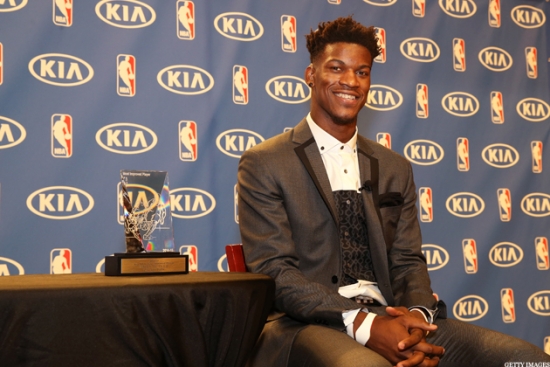

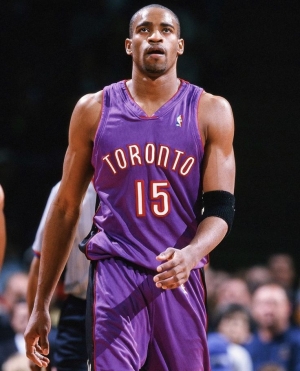
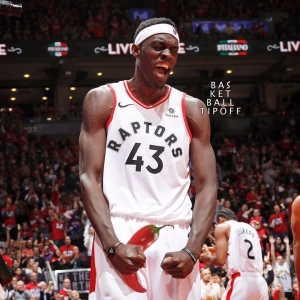
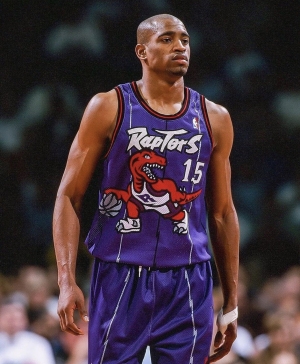
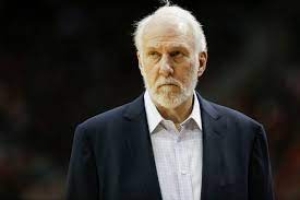
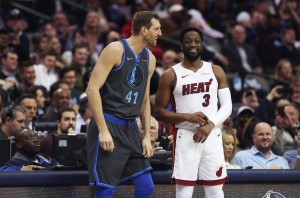
Comments powered by CComment